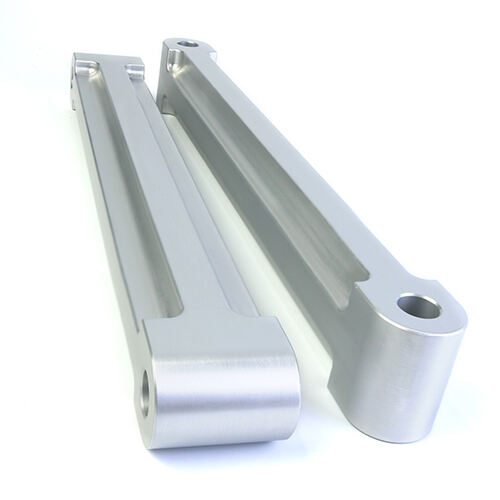ما هي عمليات التشغيل والتصنيع باستخدام الحاسب الآلي (CNC)؟
مع استمرار الطلب العالمي التصنيع تتطور حتى عام 2025، الحاسوب تكنولوجيا التحكم العددي (CNC) تواصل إعادة تعريف قدرات الإنتاج عبر كل القطاعات الصناعية تقريبًا. يمثل التشغيل الآلي باستخدام التحكم العددي (CNC) اندماج التصميم الرقمي والهندسة الميكانيكية والأتمتة الحاسوبية لإنشاء نظام تصنيعي قادر على إنتاج مكونات بدرجة غير مسبوقة من الدقة وإمكانية التكرار والكفاءة. وقد تطورت هذه التكنولوجيا من كونها طريقة تصنيع متخصصة إلى أن أصبحت العمود الفقري للإنتاج الصناعي الحديث، مما يمكنها من دعم كل شيء بدءًا من النمذجة السريعة وحتى تصنيع المكونات بكميات كبيرة. إن فهم الوضع الحالي لـ تصنيع باستخدام الحاسب الآلي CNC — قدراتها وعملياتها وتطبيقاتها — يوفر رؤية أساسية لمشهد التصنيع المعاصر ومسارات تطور الصناعة المستقبلية.

فهم أساسيات التحكم العددي (CNC)
1. المبادئ الأساسية والتشغيل
تعمل ماكينات التصنيع باستخدام الحاسب الآلي على المبدأ الأساسي للتصنيع بالطرح، حيث يتم إزالة المواد بشكل منهجي من كتلة صلبة لإنشاء جزء مكتمل. ويتم التحكم في هذه العملية من خلال برامج حاسوبية (رموز G) تحدد كل جانب من جوانب عملية التشغيل، بما في ذلك:
• مسارات الأداة وتسلسلات القص
• سرعة الدوران ومعدلات التغذية
• تطبيق المبرد وإدارة الشوائب
• تغيير الأدوات تلقائيًا وإعادة تحديد موقع قطعة العمل
يحوّل هذا المجموعة الرقمية من التعليمات النماذج ثلاثية الأبعاد لـ CAD إلى مكونات مادية من خلال سلسلة من الحركات المنسقة على طول محاور متعددة، تتراوح عادةً بين 3 إلى 5 محاور في التطبيقات الصناعية القياسية.
2. تصنيف المعدات والقدرات
تصنيف معدات CNC حسب القدرة والتطبيق
| نوع الآلة | المحاور | الدقة النموذجية | التطبيقات الشائعة |
| ماكينات 3 محاور | 3 | ±0.05 مم | التشكيل الأساسي، والتجويف، والثقب |
| ماكينات تشكيل خماسية المحاور | 5 | ±0.025 مم | أشكال معقدة، مكونات الطيران والفضاء |
| آلات الخراطة CNC | 2-4 | ±0.01 مم | أجزاء دوارة، محاور، وصلات |
| ماكينات متعددة المهام | 5+ | ±0.015 مم | معالجة الجزء بالكامل في إعداد واحد |
| ماكينات خراطة من النوع السويسري | 7+ | ±0.005 مم | مكونات طبية، محاور دقيقة |
إن التطور من أنظمة ثلاثية المحاور إلى أنظمة متعددة المحاور يُظهر تطور التقنية نحو حلول تشغيل شاملة تقلل من عدد الإعدادات وتحسن الدقة من خلال أنظمة إحداثيات موحدة والتحكم المستمر في مسار الأداة.
التحليل الفني ومقاييس الأداء
1. تقييم الدقة وإمكانية التكرار
تكشف الاختبارات الشاملة عبر بيئات تصنيع متعددة عن مزايا أداء مميزة لأنظمة التحكم العددي بالحاسوب (CNC):
• تكرار تحديد المواقع ضمن نطاق دقيقتين ميكرونيتين للمراكز الآلية المتطورة.
• جودة تشطيب السطح التي تصل إلى Ra 0.4 ميكرومتر دون الحاجة إلى عمليات ثانوية.
• الحفاظ على التسامحات الهندسية عبر دفعات الإنتاج مع معدل امتثال يتجاوز 99.7%.
• الاستقرار الحراري الذي يحافظ على الدقة خلال دورات إنتاج تستمر 8 ساعات.
هذه المؤشرات تُرسيّ أنظمة التصنيع باستخدام التحكم العددي بالحاسوب (CNC) كمعيار للإنتاج الدقيق للمكونات، خاصة في الصناعات التي يكون فيها الاستقرار الأبعادي مؤثرًا مباشرًا على أداء المنتج وموثوقيته.
2. قياس الكفاءة والإنتاجية
تُظهر التحليلات المقارنة بين الأساليب التقليدية والتصنيع باستخدام التحكم العددي بالحاسوب (CNC) مزايا كبيرة:
• خفض وقت الإعداد بنسبة 70% من خلال دمج سير العمل الرقمي.
• القدرة على التشغيل دون مراقبة، مما يمدد فترة الإنتاج إلى دورة مستمرة على مدار 24 ساعة.
• تحسينات في استخدام المواد تصل إلى 35٪ من خلال خوارزميات التداخل المُحسّنة.
• تقليل وقت التحويل من ساعات إلى دقائق مع إدارة الأدوات الرقمية.
يؤدي التأثير التراكمي لهذه الكفاءات إلى تخفيضات إجمالية في التكاليف تتراوح بين 40-60٪ للإنتاج المتوسط إلى العالي الحجم، مع تحسين ثبات الجودة في الوقت نفسه.
اعتبارات التنفيذ والاتجاهات
1. دمج التكنولوجيا والتدفق الرقمي
تشتغل عمليات التصنيع باستخدام الحاسب الآلي الحديثة بشكل متزايد كجزء من نظم رقمية متكاملة بدلاً من أن تكون معدات مستقلة. وتشمل اعتبارات التنفيذ ما يلي:
• استمرارية البيانات بين برامج التصميم بمساعدة الحاسوب/التصنيع بمساعدة الحاسوب/التصنيع باستخدام الحاسب الآلي لتجنب أخطاء الترجمة.
• الاتصال عبر إنترنت الأشياء لمراقبة الأداء في الوقت الفعلي والصيانة التنبؤية.
• أنظمة إدارة الأدوات التي تتتبع الاستخدام وأنماط البلى ومدة العمر المتوقعة.
• أنظمة التحكم التكيفية التي تستجيب لتغيرات المادة وحالة الأداة.
تُنشئ هذه التكاملات بيئات إنتاجية حيث يمكن للنماذج الرقمية التنبؤ بدقة بالنتائج وتحسين العمليات باستمرار بناءً على بيانات الإنتاج الفعلية.
2. الاتجاهات الناشئة والاتجاهات المستقبلية
تشير تطورات الصناعة الحالية إلى عدة تطورات مهمة:
• التصنيع الهجين الذي يجمع بين العمليات التصنيعية التراكمية والعمليات الاستنزافية.
• تحسين المعلمات وأدوات القطع باستخدام الذكاء الاصطناعي.
• توسيع قدرات المواد لتشمل المواد المركبة والسبيكة المتقدمة.
• واجهات برمجة مبسطة تقلل من متطلبات التدريب المتخصص.
• تحسينات في الاستدامة من خلال أنظمة مراقبة الطاقة وإعادة التدوير.
تواصل هذه التطورات خفض حواجز التنفيذ مع توسيع إمكانيات التطبيق عبر صناعات جديدة وأنواع جديدة من المواد.
الاستنتاج
أصبح التصنيع باستخدام الحاسب الآلي (CNC) حجر الزاوية في التصنيع الحديث، حيث يوفر إمكانات استثنائية من حيث الدقة والكفاءة والمرونة في إنتاج المكونات. إن تطور هذه التقنية من التفريز الآلي البسيط إلى أنظمة تصنيع معقدة ومتكاملة يُظهر مدى أهميتها المستمرة في بيئة صناعية رقمية متزايدة التعقيد. وتُحقق التنفيذات الحالية مستويات دقة تصل إلى تسامحات الميكرون، مع تقليل كبير في وقت الإنتاج والتكلفة مقارنة بالطرق التقليدية. ويضمن الدمج المستمر لتقنيات المراقبة والتحسين والتوصيل أن يظل التصنيع باستخدام الحاسب الآلي عنصرًا أساسيًا في الإنتاج الصناعي، مع توسعه نحو تطبيقات ومواد جديدة. ومن المرجح أن تركز التطويرات المستقبلية على تبسيط التشغيل أكثر، وتعزيز الاستدامة، وإيجاد تكامل أوثق مع النظم الرقمية للتصميم والإنتاج.


